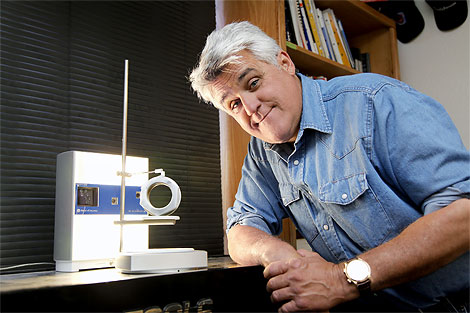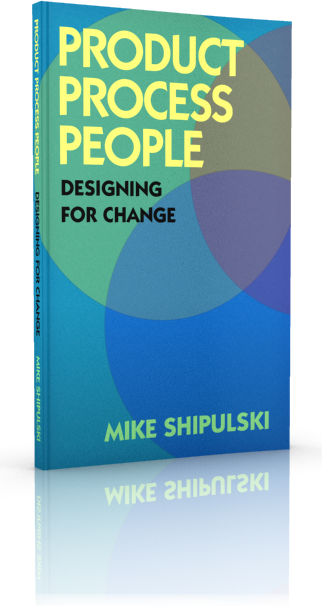Posts Tagged ‘Manufacturing Competitveness’
All Your Mental Models are Obsolete
Even after playing lots of tricks to reduce its energy consumption, our brains still consume a large portion of the calories we eat. Like today’s smartphones it’s computing power is too big for it’s battery so its algorithms conserve every chance they get. One of its go-to conservation strategies is to make mental models. The models capture the essence of a system’s behavior without the overhead of retaining all the details of the system.
And as the brain goes about its day it tries to fit what it sees to its portfolio of mental models. Because mental models are so efficient, to save juice the brain is pretty loose with how it decides if a model fits the situation. In fact the brain doesn’t do a best fit, it does a first fit. Once a model is close enough, the model is applied, even if there’s a better one in the archives.
Overall, the brain does a good job. It looks at a system and matches it with a model of a similar system it experienced in the past. But behind it all the brain is making a dangerous assumption. The brain assumes all systems are static. And that makes for mental models that are static. And because all systems change over time (the only thing we can argue about is the rate of change) the brain’s mental models are always out of date.
Over the years your brain as made a mental model of how your business works – customers do this, competitors do that, and markets do the other. But by definition that mental model is outdated. There needs to be a forcing function that causes us to refute our mental models so we can continually refine them. [A good mantra could be – all mental models are out of fashion until proven otherwise.] But worse than not having a mechanism to refute them, we have a formal business process the demands we converge on our tired mental models year-on-year. And the name of that wicked process – strategic planning.
It goes something like this. Take a little time from your regular job (though you still have to do all that regular work) and figure out how you’re going to grow your business by a large (and arbitrary) percentage. The plan must be achievable (no pie in the sky stuff), it should be tightly defined (even though everyone knows things are dynamic and the plan will change throughout the year), you must do everything you did last year and more and you have fewer resources than last year. Any brain in it’s right will fit the old models to the new normal and put the plan together in the (insufficient) time allotted. The planning process reinforces the re-use of old models.
Because the brain believes everything is static, it’s thinking goes like this – a plan based on anything other than the tried-and-true mental models cannot have certainty or predictability in time or resources. And it’s thinking is right, in part. But because all mental models are out of date, even plans based on existing models don’t have certainty and predictability. And that’s where the wheels fall off.
To inject a bit more reality into strategic planning, ignore the tired old information streams that reinforce existing thinking and find new ones that provide information that contradicts existing mental models. Dig deeply into the mismatch between the new information and the old mental models. What is behind the difference? Is the difference limited to a specific region or product line? Is the mismatch new or has it always been there? The intent of this knee-deep dissection is not to invalidate the old models but to test and refine.
There is infinite detail in the world. Take a look at a tree and there’s a trunk and canopy. Look at the canopy and see the leaves. Look deeper to see a leaf and its veins. In order to effectively handle all this detail our brains create patterns and abstractions to reduce the amount of information needed to make it through the day.
In the case of the tree, the word “tree” is used to capture the whole thing – roots and all. And at a higher level, “tree” can represent almost any type of tree at almost any stage in its life. The abstraction is powerful because it reduces the complexity, as long as everyone’s clear which tree is which.
The message is this. Our brain takes shortcuts with its chunking of the world into mental models that go out style. And our brain uses different levels of abstraction for the same word to mean different things. Care must be taken to overtly question our mental models and overtly question the level of abstraction used when statements of facts are made.
Knowing what isn’t said is almost important as what is said. To maintain this level of clarity requires calm, centered awareness which today’s pace makes difficult.
There’s no pure cure for the syndrome. The best we can do is to be well-rested and aware. And to do that requires professional confidence and personal disciple.
Slowing down just a bit can be faster, and testing the assumptions behind our business models can be even faster. Last year’s mental models and business models should be thought of as guilty until proven relevant. And for that you need to make the time to think.
In today’s world we confuse activity with progress. But really, in today’s dynamic world thinking is progress.
Image credit – eyeliam.
Can It Grow?
 If you’re working in a company you like, and you want it to be around in the future, you want to know if it will grow. If you’re looking to move to a new company, you want to know if it has legs – you want to know if it will grow. If you own stock, you want to know if the company will grow, and it’s the same if you want to buy stock. And it’s certainly the case if you want to buy the whole company – if it can grow, it’s worth more.
If you’re working in a company you like, and you want it to be around in the future, you want to know if it will grow. If you’re looking to move to a new company, you want to know if it has legs – you want to know if it will grow. If you own stock, you want to know if the company will grow, and it’s the same if you want to buy stock. And it’s certainly the case if you want to buy the whole company – if it can grow, it’s worth more.
To grow, a company has to differentiate itself from its competitors. In the past, continuous improvement (CI) was a differentiator, but today CI is the minimum expectation, the cost of doing business. The differentiator for growth is discontinuous improvement (DI).
With DI, there’s an unhealthy fascination with idea generation. While idea generation is important, companies aren’t short on ideas, they’re short on execution. But the one DI differentiator is the flavor of the ideas. To do DI a company needs ideas that are radically different than the ones they’re selling now. If the ideas are slightly twisted variants of today’s products and business models, that’s a sure sign continuous improvement has infiltrated and polluted the growth engine. The gears of the DI engine are gummed up and there’s no way the company can sustain growth. For objective evidence the company has the chops to generate the right ideas, look for a process that forces their thinking from the familiar, something like Jeffrey Baumgartner’s Anticonventional Thinking (ACT).
For DI-driven growth, the ability to execute is most important. With execution, the first differentiator is how the company investigates radically new ideas. There are three differentiators – a focus on speed, a “market first” approach, and the use of minimum viable tests (MVTs). With new ideas, it’s all about how fast you can learn, so speed should come through loud and clear. Without a market, the best idea is worthless, so look for “market first” thinking. Idea evaluation starts with a hypothesis that a specific market exists (the market is clearly defined in the hypothesis) which is evaluated with a minimum viable test (MVT) to prove or disprove the market’s existence. MVTs should error on the side of speed – small, localized testing. The more familiar minimum viable product (MVP) is often an important part of the market evaluation work. It’s all about learning about the market as fast as possible.
Now, with a validated market, the differentiator is how fast company can rally around the radically new idea and start the technology and product work. The companies that can’t execute slot the new project at the end of their queue and get to it when they get to it. The ones that can execute stop an existing (lower value) project and start the new project yesterday. This stop-to-start behavior is a huge differentiator.
The company’s that can’t execute take a ready-fire-aim approach – they just start. The companies that differentiate themselves use systems thinking to identify gaps in resources and capabilities and close them. They do the tough work of prioritizing one project over another and fully staff the important ones at the expense of the lesser projects. Rather than starting three projects and finishing none, the companies that know how to do DI start one, finish one, and repeat. They know with DI, there’s no partial credit for a project that’s half done.
All companies have growth plans, and at the highest level they all hang together, but some growth plans are better than others. To judge the goodness of the growth plan takes a deeper look, a look into the work itself. And once you know about the work, the real differentiator is whether the company has the chops to execute it.
Image credit – John Leach.
The Safest Bet Is Far Too Risky
 It’s harder than ever to innovate, and getting harder.
It’s harder than ever to innovate, and getting harder.
The focus on growth can be empowering, but when coupled with signed-in-blood accountability, empowering turns to puckering. It’s an unfair double-bind. Damned if you try something new and it doesn’t work, and damned if you stay the course and don’t hit the numbers. The most popular approach seems to be to do more of what worked. A good approach, but not as good as it’s made out to be.
Doing more of what worked is good, and it works. But it can’t stand on its own. With today’s unreasonable workloads, every resource is fully booked and before doing more of anything, you’ve got to do less of something else. ‘More of what worked’ must walk hand-in-hand with ‘Stop what didn’t work.’ Without stopping, without freeing up resources, ‘more of what worked’ is insufficient and unsustainable.
But even the two together are insufficient, and there’s a much needed third leg to stabilize the stool – ‘starting new work.’ Resources freed by stopping are allocated to starting new work, and this work, also known as innovation, is the major source of growth.
‘More of what worked’ is all about productivity – doing more with the same resources; and so is ‘stopping what didn’t work’ – reclaiming and reallocating ineffective resources. Both are important, but more importantly – they’re not innovation.
As you’re well aware, the rules are changing faster than ever, and at some point what worked last year won’t work this year. The only way to stay ahead of a catastrophe is to make small bets in unproven areas. If the bets are successful, they turn into profitable innovation and growth. But the real value is the resiliency that comes from the ritualistic testing/learning cycles.
Going all-in on what worked last year is one of the riskiest bets you can make.
The Threshold Of Uncertainty
 Our threshold for uncertainty is too low.
Our threshold for uncertainty is too low.
Early in projects, even before the first prototype is up and running, you know what the product must do, what it will cost, and, most problematic, when you’ll be done. Independent of work content, level of newness, and workloads, there’s no uncertainty in your launch date. It’s etched in stone and the consequences are devastating.
A zero tolerance policy on uncertainty forces irrational behavior. As soon as possible, engineering gets something running in the lab, and then doesn’t want to change it because there’s no time. The prototype is almost impossible to build and is hypersensitive to normal process variation, but these issues are not addressed because there’s no time. Everyone agrees it’s important to fix it, and agrees to fix it after launch, but that never happens because the next project is already late before it starts. And the death cycle repeats project after project.
The root cause of this mess is the mistaken porting of manufacturing’s zero uncertainly mindset into design. The thinking goes like this – lean and Six Sigma have achieved magical success in manufacturing by eliminating uncertainty, so let’s do it in product design and achieve similar results. This is a fundamental mistake as the domains are fundamentally different.
In manufacturing the same product is made day-in and day-out – no uncertainty; in product design no two product development efforts are the same and there’s lots of stuff that’s done for the first time – uncertainty by definition. In manufacturing there’s a revision controlled engineering drawing that defines the right answer (the geometry and the material) – make it like the picture and it’s all good; in product design the material is chosen from many candidates and the geometry is created from scratch – the picture is created from nothing. By definition there’s more inherent uncertainty in product design, and to tighten the screws and fix the launch date at the start is inappropriate.
Design engineers must feel like there’s enough time to try new things because new products that provide new functionality require new technologies, new materials, and new geometries. With new comes inherent uncertainty, but there are ways to manage it.
To hold the timeline, give on the specification and cost. Design as fast as you can until you run out of time then launch. The product won’t work as well as you’d like and it will cost more than you’d like, but you’ll hit the schedule. A good way to do this is to de-feature a subassembly to reduce design time, and possibly reduce cost. Or, reuse a proven subassembly to reduce design time – take a hit in cost, but hit the timeline. The general idea – hold schedule but flex on performance and cost.
It feels like sacrilege to admit that something’s got to give, but it’s the truth. You’ve seen how it goes when you edict (in no uncertain terms) that the timeline will be met and there’ll be no give on performance and cost. It hasn’t worked, and it won’t – the inherent uncertainty of product design won’t let it.
Accept the uncertainty; be one with it; and manage it. It’s the only way.
Accomplishments in 2013 (Year Four)
Accomplishments in 2013
- Fourth year of weekly blog posts without missing a beat or repeating a post. (251 posts in total.)
- Third year of daily tweets – 2,170 in all. (@mikeshipulski)
- Second year as Top 40 Innovation Bloggers (#12) – Innovation Excellence, the web’s top innovation site.
- Seventh consecutive year as Keynote Speaker at International Forum on DFMA.
- Fourth year of LinkedIn working group – Systematic DFMA Deployment.
- Third year writing a column for Assembly Magazine (6 more columns this year).
- Wrote a book — PRODUCT PROCESS PEOPLE – Designing for Change (Which my subscribers can download for free.)
Top 5 Posts
- What They Didn’t Teach Me In Engineering School — a reflection on my learning after my learning.
- Guided Divergence — balancing act of letting go and shaping the future.
- Innovation in 26 words — literally.
- Lasting Behavioral Change — easy to say, tough to do.
- Prototype The Unfamiliar — test early and often.
I look forward to a great year 5.
Moving at the Speed of People
 More-with-less is our mantra for innovation. But these three simple words are dangerous because they push us almost exclusively toward efficiency. On the surface, efficiency innovations sound good, and they can be, but more often than not efficiency innovations are about less and fewer. When you create a new technology that does more and costs less the cost reduction comes from fewer hours by fewer people. And if the cash created by the efficiency finances more efficiency, there are fewer jobs. When you create an innovative process that enables a move from machining to forming, hard tooling and molding machines reduce cost by reducing labor hours. And if the profits fund more efficiency, there are fewer jobs. When you create an innovative new material that does things better and costs less, the reduced costs come from fewer labor hours to process the material. And if more efficiency is funded, there are less people with jobs. (The cost reduction could also come from lower cost natural resources, but their costs are low partly because digging them up is done with fewer labor hours, or more efficiently.)
More-with-less is our mantra for innovation. But these three simple words are dangerous because they push us almost exclusively toward efficiency. On the surface, efficiency innovations sound good, and they can be, but more often than not efficiency innovations are about less and fewer. When you create a new technology that does more and costs less the cost reduction comes from fewer hours by fewer people. And if the cash created by the efficiency finances more efficiency, there are fewer jobs. When you create an innovative process that enables a move from machining to forming, hard tooling and molding machines reduce cost by reducing labor hours. And if the profits fund more efficiency, there are fewer jobs. When you create an innovative new material that does things better and costs less, the reduced costs come from fewer labor hours to process the material. And if more efficiency is funded, there are less people with jobs. (The cost reduction could also come from lower cost natural resources, but their costs are low partly because digging them up is done with fewer labor hours, or more efficiently.)
But more-with-less and the resulting efficiency improvements are helpful when their profits are used to fund disruptive innovation. With disruptive innovation the keywords are still less and fewer, but instead of less cost, the product’s output is less; and instead of fewer labor hours, the product does fewer things and satisfies fewer people.
It takes courage to run innovation projects that create products that do less, but that’s what has to happen. When disruptive technologies are young they don’t perform as well as established technologies, but they come with hidden benefits that ultimatley spawn new markets, and that’s what makes them special. But in order to see these translucent benefits you must have confidence in yourself, openness, and a deep personal desire to make a difference. But that’s not enough because disruptive innovations threaten the very thing that made you successful – the products you sell today and the people that made it happen. And that gets to the fundamental difference between efficiency innovations and disruptive innovations.
Efficiency innovations are about doing the familiar in a better way – same basic stuff, similar product functionality, and sold the same way to the same people. Disruptive innovations are about doing less than before, doing it with a less favorable cost signature, and doing it for different (and far fewer) people. Where efficiency innovation is familiar, disruptive innovation is contradictory. And this difference sets the the pace of the two innovations. Where efficiency innovation is governed by the speed of the technology, disruptive innovation is governed by the speed of people.
With efficiency innovations, when the technology is ready it jumps into the product and the product jumps into the market. With disruptive innovations, when the technology is ready it goes nowhere because people don’t think it’s ready – it doesn’t do enough. With efficiency innovations, the new technology serves existing customers so it launches; with disruptive, technology readiness is insufficient because people see no existing market and no existing customers so they make it languish in the corner. With efficiency, it launches when ready because margins are better than before; with disruptive, it’s blocked because people don’t see how the new technology will ultimately mature to overtake and replace the tired mainstream products (or maybe because they do.)
Done poorly efficiency innovation is a race to the bottom; done well it funds disruptive innovation and the race to the top. When coordinated the two play together nicely, but they are altogether different. One is about doing the familiar in a more efficient way, and the other is about disrupting and displacing the very thing (and people) that made you successful.
Most importantly, efficiency innovation moves at the speed of technology while disruptive innovation moves at the speed of people.
Innovation Eats Itself
 We all want more innovation, though sometimes we’re not sure why. Turns out, the why important.
We all want more innovation, though sometimes we’re not sure why. Turns out, the why important.
We want to be more innovative. That’s a good vision statement, but it’s not actionable. There are lots of ways to be innovative, and it’s vitally important to figure out the best flavor. Why do you want to be more innovative?
We want to be more innovative to grow sales. Okay, that’s a step closer, but not actionable. There are many ways to grow sales. For example, the best and fastest way to sell more units is to reduce the price by half. Is that what you want? Why do you want to grow sales?
We want to be more innovative to grow sales so we can grow profits. Closer than ever, but we’ve got to dig in and create a plan.
First, let’s begin with the end in mind. We’ve got to decide how we’ll judge success. How much do we want to grow profits? Double, you say? Good – that’s clear and measurable. I like it. When will we double profits? In four years, you say? Another good answer – clear and measureable. How much money can we spend to hit the goal? $5 million over four years. And does that incremental spending count against the profit target? Yes, year five must double this year’s profits plus $5 million.
Now that we know the what, let’s put together the how. Let’s start with geography. Will we focus on increasing profits in our existing first world markets? Will we build out our fledgling developing markets? Will we create new third world markets? Each market has different tastes, cultures, languages, infrastructure requirements, and ability to pay. And because of this, each requires markedly different innovations, skill sets, and working relationships. This decision must be made now if we’re to put together the right innovation team and organizational structure.
Now that we’ve decided on geography, will we do product innovation or business model innovation? If we do product innovation, do we want to extend existing product lines, supplement them with new product lines, or replace them altogether with new ones? Based on our geography decision, do we want to improve existing functionality, create new functionality, or reduce cost by 80% of while retaining 80% of existing functionality?
If we want to do business model innovation, that’s big medicine. It will require we throw away some of the stuff that has made us successful. And it will touch almost everyone. If we’re going to take that on, the CEO must take a heavy hand.
For simplicity, I described a straightforward, linear process where the whys are clearly defined and measurable and there’s sequential flow into a step-wise process to define the how. But it practice, there’s nothing simple or linear about the process. At best there’s overwhelming ambiguity around why, what, and when, and at worst, there’s visceral disagreement. And worse, with 0% clarity and an absent definition of success, there are several passionate factions with fully built-out plans that they know will work.
In truth, figuring out what innovation means and making it happen is a clustered-jumbled path where whats inform whys, whys transfigure hows, which, in turn, boomerang back to morph the whats. It’s circular, recursive, and difficult.
Innovation creates things that are novel, useful, and successful. Novel means different, different means change, and change is scary. Useful is contextual – useful to whom and how will they use it? – and requires judgment. (Innovations don’t yet exist, so innovation efforts must move forward on predicted usefulness.) And successful is toughest of all because on top of predicted usefulness sit many other facets of newness that must come together in a predicted way, all of which can be verified only after the fact.
Innovation is a different animal altogether, almost like it eats itself. Just think – the most successful innovations come at the expense of what’s been successful.
Engineering Will Carry the Day
 Engineering is more important than manufacturing – without engineering there is nothing to make, and engineering is more important than marketing – without it there is nothing to market.
Engineering is more important than manufacturing – without engineering there is nothing to make, and engineering is more important than marketing – without it there is nothing to market.
If I could choose my competitive advantage, it would be an unreasonably strong engineering team.
Ideas have no value unless they’re morphed into winning products, and that’s what engineering does. Technology has no value unless it’s twisted into killer products. Guess who does that?
We have fully built out methodologies for marketing, finance, and general management, each with all the necessary logic and matching toolsets, and manufacturing has lean. But there is no such thing for engineering. Stress analysis or thermal modeling? Built a prototype or do more thinking? Plastic or aluminum? Use an existing technology or invent a new one? What new technology should be invented? Launch the new product as it stands or improve product robustness? How is product robustness improved? Will the new product meet the specification? How will you know? Will it hit the cost target? Will it be manufacturable? Good luck scripting all that.
A comprehensive, step-by-step program for engineering is not possible.
Lean says process drives process, but that’s not right. The product dictates to the factory, and engineers dictate the product. The factory looks as it does because the product demands it, and the product looks as it does because engineers said so.
I’d rather have a product that is difficult to make but works great rather than one that jumps together but works poorly.
And what of innovation? The rhetoric says everyone innovates, but that’s just a nice story that helps everyone feel good. Some innovations are more equal than others. The most important innovations create the killer products, and the most important innovators are the ones that create them – the engineers.
Engineering as a cost center is a race to the bottom; engineering as a market creator will set you free.
The only question: How are you going to create a magical engineering team that changes the game?
Circle of Life
Engineers solve technical problems so
Other engineers can create products so
Companies can manufacture them so
They can sell them for a profit and
Use the wealth to pay workers so
Workers can support their families and pay taxes so
Their countries have wealth for good schools to
Grow the next generation of engineers to
Solve the next generation of technical problems so…
Make It Where You Sell It
 Lean has rolled through our factories and generated profits at every turn. Now it’s time to get serious about savings and realize the next level of savings. Companies are pushing lean into the back office, but that won’t get it done. The savings will be good, but not great. After picking low-hanging factory fruit, there’s uncertainty around what’s next for lean.
Lean has rolled through our factories and generated profits at every turn. Now it’s time to get serious about savings and realize the next level of savings. Companies are pushing lean into the back office, but that won’t get it done. The savings will be good, but not great. After picking low-hanging factory fruit, there’s uncertainty around what’s next for lean.
Make it where you sell it, that’s next for lean. Like a central theorem, this simple phrase will become lean’s mantra, and it will change everything, including our organizations themselves. The big multi-national companies have already started their journey, and we can take our cues from them.
The major automakers have assembly plants on all continents – objective evidence of make it where you sell it. There are many benefits to make it where you sell it, but the top three are: speed, speed, speed. The automotive value stream without make it where you sell it: make a car, put it on a boat, deliver it to a dealer, and sell it. Make it where you sell it eliminates the boat: make it, deliver it, and sell it. Inventory is proportional to cycle time and eliminating the long boat ride shortens the value stream, improves response time and reduces inventory.
Make it where you sell it starts closest to the customer, and final assembly is the first to be established in-market. Engines and transmissions still ride the boat, but not for long. After final assembly, make it where you sell it targets big, heavy, expensive subassemblies, so expect in-market engine and transmission plants. (However, big ones like these may stay put for while due to technological, political, or cultural reasons.)
With one piece flow, right-sized machines, and short product runs, lean has taught us the most economic scale is far smaller than we’d imagined. We’ve learned for our factories smaller is better, and make it where you sell it extrapolates smaller-is-better to the organization itself. Here again, the big guys lead the way. Multinationals are breaking themselves into smaller units, right-sizing into smaller regional companies – still big, but smaller. Their in-country manufacturing creates nice tight feedback loops between customer and factory. And there’s an important benefit to the brand – it becomes a local brand. Not only can the brand better serve regional tastes, it provides goodwill in the form of jobs.
[Disclaimer: I don’t advocate outsourcing. I’m simply explaining the forces at work and their consequences.]
Lean cares about speed, not countries, and make it where you sell it causes jobs flow across company boarders. This is especiallylevant as countries compete for manufacturing jobs like their survival depended on them. For those countries that understand manufacturing jobs are the bedrock of a sustainable economy, make it where you sell it can be threatening. If you’re a country that doesn’t buy a lot of manufactured goods, you and your economy trouble – jobs will flow to where products are sold.
Make it where you sell it won’t stop at making, and will extend up stream. The next logical extension is design it where you sell it, R&D it where you sell it, and innovate it where you sell it. (The biggest companies are already doing this with regional R&D centers.) More jobs will flow across borders, but this time they’ll be the coveted thinking jobs.
Make it where you sell it is the guiding principle companies are using to become more responsive, more productive, and local. It has already broken the biggest companies into smaller ones. They’ve realized that the most economic scale is small, and they’re getting there using make it where you sell it.
Make it where you sell it will change all companies, even small ones. And the mantra for small companies: think narrow and deep.
I will hold a half-day Workshop on Systematic DFMA Deployment on June 13 in RI. (See bottom of linked page.) I look forward to meeting you in person.




 Mike Shipulski
Mike Shipulski